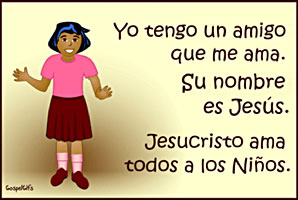WHEN ALL ELSE FAILS, READ INSTRUCTIONS
By Mary Hunt Webb
Posted Saturday, March 19, 2011
Did you have difficulty with the recent spring change to Daylight Savings Time?

[Photograph courtesy of BigFoto.com]
Since the last change, six months ago, we had acquired a new device. That meant that my husband had never had to adjust the time on it before. While he fiddled with the device, I found the instruction booklet.
As I dropped the booklet in his lap, I quipped, “When all else fails, read the instructions.”
“Thanks,” he said. Flipping through the pages from the front to the back, he said, “Uh-oh! There’s no index or table of contents here.” Then, after less than a minute, he found the information he needed and said, “Oh, this is easier than I thought!”

[Photograph courtesy of BigFoto.com]
Like most of us, he had only read enough of the instructions to enable him to set up the device, but he hadn’t read the booklet all the way through. Since few of us do this, that makes him normal.
Most of us treat the Bible the same way. We treat it like a handbook, only looking for the information we need when we have a problem.
However, a “handbook” is not arranged like a novel for reading all the way through. Instead, a handbook is a reference work with a helpful index that guides the reader to specific information for particular problems. If a person only approaches the Bible through the Concordance (the word reference index) that is in the back of the Bible, he or she is unlikely to gain the sense of continuity that holds the Bible together. In other words, the Bible doesn’t make sense when read that way.
Not only have I seen both Christians and unbelievers use the “handbook approach” to reading the Bible but I also used that method myself during my teen and young adult years. It was only after I started reading the Bible through every year that I learned how helpful it is to be sufficiently familiar with the Bible that I could find information easily when I needed guidance.
I also found that the familiarity of reading the Bible every year meant that I could recognize when someone made an incorrect statement.
That enabled me to respond, “That’s not what the Bible says. What it does say is that…”
People get into a lot of trouble by not knowing what the Bible says. It is only by reading the Bible all the way through every year that a person can gain the context of the information and, thus, prevent a problem.
When my mother was young, it was difficult to read the Bible from cover to cover ever year because there was only one English translation of it: the King James Version or KJV. The use of “thou” and “thy” instead of “you” and “your” made it difficult to understand the sense of what one was reading.

[Photograph courtesy of FreeJesusChristWallPapers.com]
Through the last half of the twentieth century (the 1900s), more current translations appeared so that now the ones that are available are easier to read. There are so many, in fact, that some denominations and church councils have enough to argue about!
The abundance of various translations means that you can read a different translation every year and mix it up a bit. That’s what my husband did for several years. Buying him Christmas presents meant that I could include a new translation of the Bible for him to read during the next year. My only problem was keeping track of the translations that I had bought him so that I wouldn’t purchase one that he already had.

[Photograph courtesy of FreeFoto.com]
One of the ways that I strengthened my linguistic ability was to get a bilingual New Testament in English and Spanish in which the verses in the two languages are in columns side-by-side. (If you have read my bio, you know that I am fluent in Spanish.) After reading a verse in English, I then moved to the column beside it to read the same verse in Spanish.
In doing that, I greatly increased my Spanish vocabulary. If your first language is something other than English, you could do something similar to strengthen your English skills and to gain new vocabulary words.
This little girl in pink gives an example of how one can learn from reading the same idea in two languages.

[Image courtesy of GospelGifs.com]

[Image courtesy of GospelGifs.com]
Another way to vary my Bible reading was to change the format from which I read. I am now on my fourth time to read the Bible in a chronological format or time-ordered arrangement. During other years, I have followed a plan to read chapters from both the Old Testament and The New Testament every day.
No matter how you read the Bible, just do it. Reading three chapters every day got me through a difficult period of my life. A person that doesn’t read the Bible every day can lose hope.
Don’t lose hope. Find it in the pages of the Bible.

[Photo courtesy of FreeFoto.com]
Psalm 39:7 (NKJV) "And now, Lord, what do I wait for? My hope is in You."

